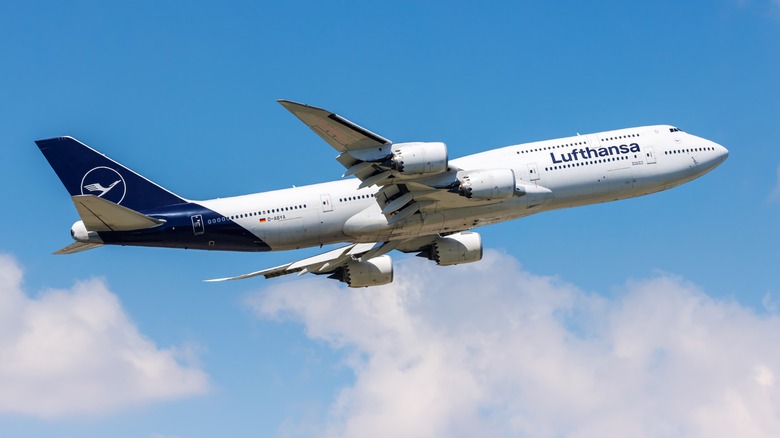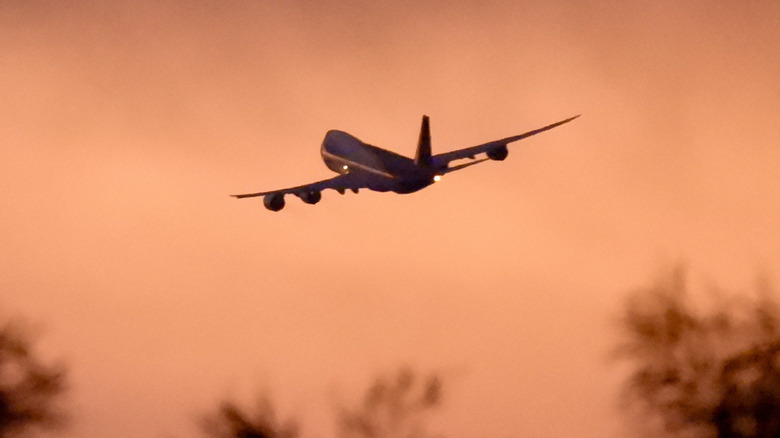How Heavy Is The Boeing 747 And How Much Can It Carry?
When Boeing's iconic 747 aircraft first took to the skies in 1969, the massive aircraft almost immediately changed the aircraft game, proving itself a plane capable of carrying both cargo and passengers to all corners of the globe. Over the years, the vessels would even earn the nickname "Queen of the Skies," and rank as the largest commercial craft in the world.
Overtly customized versions of Boeing's 747s are, of course, currently serving the U.S. government under the designation of Air Force One. However, that fact will have to change sometime down the road, as Boeing officially ceased production on its beloved 747 build in 2023, rolling its final plane off the line in January of that year. The decision to phase out the 747 was reportedly made after a decade or two of airlines and freighter companies sizing down to smaller, more fuel-efficient aircraft. There are, however, still 747's flying throughout the world. Many are 747-8s, which are the last of the 747 lineup and arguably the best jets in the sky these days.
Per the plane's specs, the 747-8 was every bit the behemoth its predecessors were, boasting a wingspan of 224 ft five inches, a height of 63 ft 6 inches, and a length of more than 250 ft. The final 747 also reportedly weighed in at a whopping 485,300 lbs or just over 220 tons. Even at that size, the craft can push mach .086, ranking it among the fastest commercial jets in the sky.
Boeing's 747 can carry some serious weight into the skies
Given the reported size and weight of Boeing's 747-8, it might seems reasonable to assume the bulk of weight the aircraft carries into the sky resides in the nuts, bolts, steel, and fuel that goes into its making — not to mention the four immense GEnx engines required to actually get all that weight airborne. You would be correct in that assumption, as the 747-8's reported operating empty weight accounts for much of the plane's maximum takeoff weight.
As for the 747-8's cargo capacity, the aircraft can reportedly carry a payload of up to 308,000 pounds, or about 154 tons. As Boeing playfully points out, that's about 10,767 gold bars. The aircraft manufacturer claims that its final line of 747s has a maximum takeoff weight of 987,000 pounds, which converts to a staggering 493.5 tons.
Be it gold bars, or human beings that are tucked away inside the fuselage of a 747-8, they are clearly capable of carrying some serious weight from Point A to Point B. That fact makes it all the more impressive that the enormous vessels can do so with such speed and relative grace. Given the 747-8's incredible capabilities, and the legacy of the various models that preceded the build, it will be a truly sad day when one of Boeing's best jets finally disappears from the skies. But it may be a long time before that actually happens, as 747-8s are still very much flying high across the world, with even the U.S. Government reportedly commissioning Boeing for a pair of Air Force One replacements before the line was officially retired.

